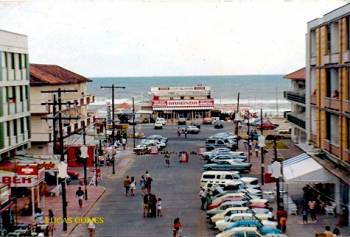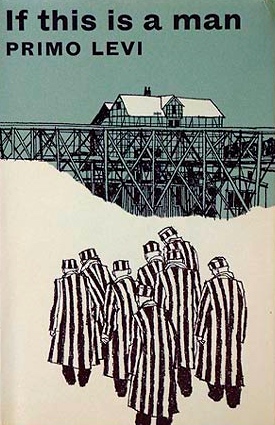Note: French author Patrick Modiano was WINNER of the Nobel Prize for Literature in 2014. He has also been WINNER of the Grand Prix du Roman de l’Academie Francaise in 1972, the Prix Goncourt in 1978, and the Prix Mondial Cino del Duca in 2010 for the total body of his work.
“For a long time…summer has been a season that gives me a sense of emptiness and absence, and takes me back to the past. Is it the too-harsh light, the silence of the streets, those contrasts of the shade and the setting sun, the other evening, on the facades of the buildings in the Boulevard Soult? The past and the present merge in my mind through a phenomenon of superimposition. That’s where the malaise must come from.” –Jean B.
 The superimposition of past and present, so often featured in the work of Nobel Prize-winning author Patrick Modiano becomes not only the primary aspect of the plot of this narrative, written in 1990, but also a controlling idea in its structure. Jean B., the main character, appears in episodes from the age of twenty through his late forties, as the narrative switches back and forth among time periods. The characters in his life, both real and reconstructed from memory, and from both his present and his past, appear, disappear, and reappear as time passes and Jean B. learns more about them and shares information about them with the reader. Twenty years old in the 1960s, when he describes hitching a ride to Saint Tropez with Ingrid Teyrsen and her husband, known as Rigaud, a couple in their mid-thirties, Jean B. is in his late forties when the book takes place “in the present,” sometime around 1990, when the novel was published. By that point he has had a successful career, is married to Annette, and is living in Paris. Sandwiched between these time frames are several intersecting stories, including Jean B’s memories of Ingrid and Rigaud, which gradually unfold and raise questions about who they really were – and, more importantly, who Jean B. really is.
The superimposition of past and present, so often featured in the work of Nobel Prize-winning author Patrick Modiano becomes not only the primary aspect of the plot of this narrative, written in 1990, but also a controlling idea in its structure. Jean B., the main character, appears in episodes from the age of twenty through his late forties, as the narrative switches back and forth among time periods. The characters in his life, both real and reconstructed from memory, and from both his present and his past, appear, disappear, and reappear as time passes and Jean B. learns more about them and shares information about them with the reader. Twenty years old in the 1960s, when he describes hitching a ride to Saint Tropez with Ingrid Teyrsen and her husband, known as Rigaud, a couple in their mid-thirties, Jean B. is in his late forties when the book takes place “in the present,” sometime around 1990, when the novel was published. By that point he has had a successful career, is married to Annette, and is living in Paris. Sandwiched between these time frames are several intersecting stories, including Jean B’s memories of Ingrid and Rigaud, which gradually unfold and raise questions about who they really were – and, more importantly, who Jean B. really is.
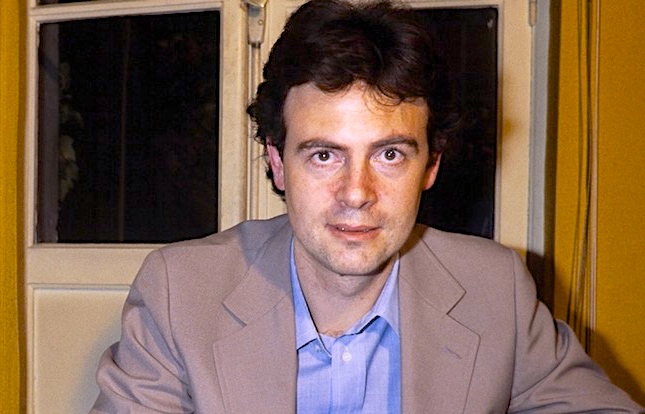
Author photo by Michel Clement AFP. He appears here to be about the age that Jean B. would have been during the last part of the novel.
As the novel opens, Jean B. is in Milan. A resident of Paris, Jean is an explorer and maker of documentary films, but he has become disenchanted with his job, and his private life is falling apart. His wife is having an affair with Cavanagh, his friend and partner in the film business. Privately, the discouraged Jean B. has decided to stage his own disappearance. Instead of taking his scheduled flight from Paris to Rio to begin a new documentary, he has flown instead to Milan, and upon arriving, he never leaves the airport. Having convinced his family and fellow filmmakers that he has, in fact, left on the announced flight for Rio, he immediately turns around and secretly flies back to Paris, planning to stay in a Paris hotel, not at home, and to change hotels regularly so that he will not be discovered. At some point he plans to tell his wife what he is doing – but not yet.
On an earlier trip to Milan eighteen years before, Jean had had an experience that has continued to niggle away at the back of his mind for the eighteen years since then. While staying at a hotel there, he learned that a woman had committed suicide in the same hotel while he was registered. Upon reading the story in the local newspaper, he discovered that the suicide was a person he knew from when he was twenty – Ingrid Teyrsen, who with her husband Rigaud had accompanied him to St. Tropez ten years before. Age forty-five at the time of her suicide, Ingrid’s suicide confounded him, especially since friends had been waiting for her in Capri. He had tried to find out more about her and Rigaud upon his return to Paris just after her suicide, but he had been unsuccessful in locating Rigaud at the only address he had for him and had dropped the subject as his work became all-encompassing. The suicide of Ingrid continued to niggle away at the back of his mind for eighteen years, however, and now, having officially “disappeared” from his job and is marriage, Jean B. decides to investigate her life and death from his vantage point in Paris, and perhaps come to some new knowledge about her and himself.
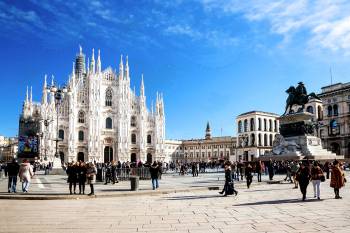
View of the Piazza del Duomo in the center of Milan. Jean B. finds a bookstore to amuse himself while there, as all the shops are closed for vacation.
Often challenging to follow because of the time shifts, especially at the beginning, the narrative switches without warning, and often without transitions, among three time frames: the first, on the Cote d’Azur, when Jean B. is twenty and Ingrid is thirty-five; the second, Jean’s visit to Milan and the suicide of Ingrid when she is forty-five; and finally, events in “the present,” eighteen years after that suicide. In the course of investigating Ingrid’s life, however, Jean B. also learns much about her earlier life as a teenager, when she is sixteen and working as a dancer; her “marriage” to Rigaud shortly afterward; and ultimately, her life in Paris during World War II and the Occupation. Throughout all these episodes and time shifts, Modiano incorporates imagery of light and dark, warmth and cold, and continuity and permanence, while developing themes of life and death, appearance and disappearance, and love and loss. Winding through all the subplots here is also an awareness that people are fallible – often victims of their emotions – and that their sense of responsibility is dependent upon their immediate emotional commitments and their present circumstances. As is often the case with Modiano, too, there is no dominating philosophical value system which governs a person’s decision-making. People often act on the basis of their emotions, and they often make mistakes.
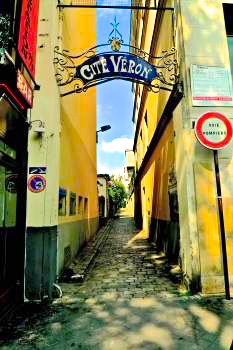
Cite Veron, located behind the Moulin Rouge in Paris, is a popular place for writers, and is where Jean B. himself lives. Boris Vian also lived here.
Readers who have never read Modiano may be surprised to discover how earnest he is as he writes his novels and deals with issues which feel real and personal. Much of his writing, is, in fact, based on real events from his life, which includes a childhood which can only be described as bizarre, negligent, and unfeeling on the part of his absentee parents, and, for him personally, often lonely in the extreme. In fact, reading Modiano conjures up many of the issues that all of us deal with as we go though our teen years, but because of his personal circumstances, with apparently no real love and no good examples to follow for much of his life – until he is taken under the wing of writer Raymond Queneau – his issues are far more serious, and his ability to survive them and learn from them makes his achievements that much more remarkable. It is this sad characteristic which make his readers respond to his novels so viscerally and with such empathy. He writes spare prose with little lyricism, but he evokes emotions so real that many of us have become addicted to his writing, perhaps in the hope that what he discovers about life will be applicable to our own. As Modiano says, “Circumstances and settings are of no importance. One day this sense of emptiness and remorse submerges you. Then, like a tide, it ebbs and disappears.” Whether one can survive this emptiness and find the resources needed to float above it when it inevitably returns are subjects he continues to explore in other novels.
ALSO by Modiano: AFTER THE CIRCUS, DORA BRUDER, FAMILY RECORD, IN THE CAFE OF LOST YOUTH, LA PLACE de L’ETOILE (Book 1 of the OCCUPATION TRILOGY), (with Louis Malle–LACOMBE LUCIEN, a screenplay, LITTLE JEWEL, THE NIGHT WATCH (Book II of the OCCUPATION TRILOGY), THE OCCUPATION TRILOGY (LA PLACE DE L’ETOILE, THE NIGHT WATCH, AND RING ROADS), PARIS NOCTURNE, PEDIGREE: A Memoir, RING ROADS (Book III of the OCCUPATION TRILOGY), SLEEP OF MEMORY, SO YOU DON’T GET LOST IN THE NEIGHBORHOOD, SUCH FINE BOYS, SUNDAYS IN AUGUST, SUSPENDED SENTENCES, VILLA TRISTE, YOUNG ONCE
Post-Nobel Prize books: SLEEP OF MEMORY (2017), INVISIBLE INK (2019)
Photos, in order: The author’s photo, taken when he was about the age of Jean B. in this novel, appears on https://newrepublic.com/ The photographer was Michel Clement, AFP
The railroad station in Milan, where Jean B. bought a newspaper telling of the death of Ingrid Teyrsen, is shown on http://www.milanostation.com
The Piazza del Duomo in the center of Milan is by http://www.matteocolombo.com/
The Cite Veron in Paris, an enclave in which a number of writers have lived, is located behind the Moulin Rouge: https://soundlandscapes.files.wordpress.com/

 Author C. B. George, a mysterious author who provides no biographical information and no photograph, tells a story of contemporary Zimbabwe, still being ruled after almost thirty-six years by dictator Robert Mugabe, now aged ninety-two. A one-party ruler, he has been famed for his appropriation of white-owned lands and their redistribution to black farmers and political allies, the disappearance and death of political enemies, the use of terror, and gross human rights abuses, all to enforce his will and to ensure the retention of his office and his wealth. Here author C. B. George, who lives in the UK, according to the book jacket, presents the narratives of three couples who represent different aspects of contemporary life in Zimbabwe, primarily in the capital of Harare. The author’s sense of drama and his ability to pace the narrative to keep the reader continuously involved in the lives of his characters, while simultaneously focusing on the attempts of these people and their families to lead “normal” lives, suggest that he may have a background in television or film.
Author C. B. George, a mysterious author who provides no biographical information and no photograph, tells a story of contemporary Zimbabwe, still being ruled after almost thirty-six years by dictator Robert Mugabe, now aged ninety-two. A one-party ruler, he has been famed for his appropriation of white-owned lands and their redistribution to black farmers and political allies, the disappearance and death of political enemies, the use of terror, and gross human rights abuses, all to enforce his will and to ensure the retention of his office and his wealth. Here author C. B. George, who lives in the UK, according to the book jacket, presents the narratives of three couples who represent different aspects of contemporary life in Zimbabwe, primarily in the capital of Harare. The author’s sense of drama and his ability to pace the narrative to keep the reader continuously involved in the lives of his characters, while simultaneously focusing on the attempts of these people and their families to lead “normal” lives, suggest that he may have a background in television or film.




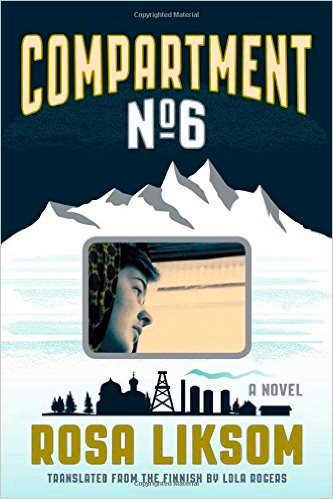 The speaker in this quotation, called “the man” throughout most of this novel, will repel every female reader – and most male readers – with his macho vulgarity, his unrelenting assessment of women in terms of their anatomy and sexual stamina, and his proud alcoholism. Leaving his battered wife behind, he is now on the trans-Siberian train from Moscow to Mongolia for a new job in construction. Though he boasts of his ability to consume seven bottles of vodka a day in his prime, he manages “only” two bottles a day on this trip. Sharing a compartment with him, a character known only as “the girl” had hoped to be alone on this trip. Recovering from a personal crisis involving Mitka, a young friend on whom she had set her romantic sights, the girl is making this trip almost as a memorial to him. She had met him in Moscow in college, where she studied antiquities and anthropology for three years, and they had hoped to go to Mongolia together to see the famous ancient petroglyphs there, some of them dating back to 11,000 B.C. So quiet and repressed that she makes only one or two statements during the entire trip, she is the complete opposite of Vadim, the man, with whom she has been fated to travel.
The speaker in this quotation, called “the man” throughout most of this novel, will repel every female reader – and most male readers – with his macho vulgarity, his unrelenting assessment of women in terms of their anatomy and sexual stamina, and his proud alcoholism. Leaving his battered wife behind, he is now on the trans-Siberian train from Moscow to Mongolia for a new job in construction. Though he boasts of his ability to consume seven bottles of vodka a day in his prime, he manages “only” two bottles a day on this trip. Sharing a compartment with him, a character known only as “the girl” had hoped to be alone on this trip. Recovering from a personal crisis involving Mitka, a young friend on whom she had set her romantic sights, the girl is making this trip almost as a memorial to him. She had met him in Moscow in college, where she studied antiquities and anthropology for three years, and they had hoped to go to Mongolia together to see the famous ancient petroglyphs there, some of them dating back to 11,000 B.C. So quiet and repressed that she makes only one or two statements during the entire trip, she is the complete opposite of Vadim, the man, with whom she has been fated to travel.

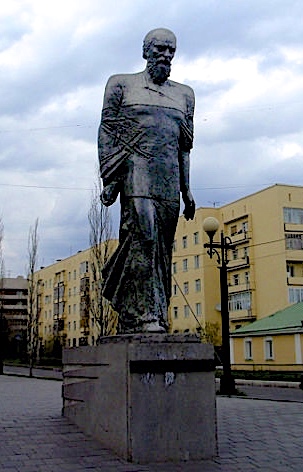


 With the release of his tenth novel to be translated and published in English since December, 2012, Neapolitan author Maurizio de Giovanni adds a third noir crime novel to his on-going “Lojacono” series featuring “the bastards of Pizzofalcone.” Giuseppe Lojacono, one of four police officers recently transferred from their home precincts to work in a backwater precinct of Naples, is, like his fellow officers, a “problem” employee in his home precinct. The four have been transferred to Pizzofalcone to replace four local officers who have been convicted of dealing with the Camorra, the Neapolitan Mafia. The four new officers, with various special talents, also have special limitations, but each has a chance to reclaim his life if he can keep out of trouble and help solve local crimes. Set in the present, these novels are dramatically different from the seven novels previously published by de Giovanni as part of his Commissario Ricciardi series, all of which are set in Naples in the early 1930s, during the reign of Benito Mussolini.
With the release of his tenth novel to be translated and published in English since December, 2012, Neapolitan author Maurizio de Giovanni adds a third noir crime novel to his on-going “Lojacono” series featuring “the bastards of Pizzofalcone.” Giuseppe Lojacono, one of four police officers recently transferred from their home precincts to work in a backwater precinct of Naples, is, like his fellow officers, a “problem” employee in his home precinct. The four have been transferred to Pizzofalcone to replace four local officers who have been convicted of dealing with the Camorra, the Neapolitan Mafia. The four new officers, with various special talents, also have special limitations, but each has a chance to reclaim his life if he can keep out of trouble and help solve local crimes. Set in the present, these novels are dramatically different from the seven novels previously published by de Giovanni as part of his Commissario Ricciardi series, all of which are set in Naples in the early 1930s, during the reign of Benito Mussolini.
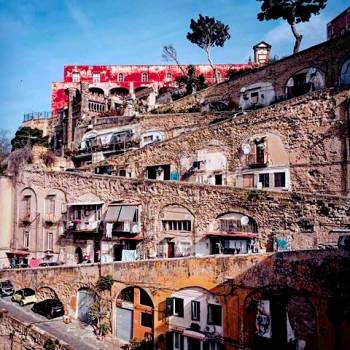




 When the unnamed protagonist of this story is in eighth grade, he and the rest of his school class attend a birthday party given for Joao, a fellow classmate, at home in Porto Alegre, Brazil. To celebrate the birthday, five of the boys, including the speaker, gather around the birthday boy during the singing of “Happy Birthday,” then grab him by the arms and legs, with the speaker supporting his neck, and give him “the bumps,” tossing him into the air thirteen times, as they have done at other parties. This time, on the thirteenth toss, however, the boys, apparently by pre-arrangement, do not catch Joao, letting him crash to the floor. He sustains serious injuries for which he is hospitalized, needing months to recuperate and after which, on his return to school, he must wear a tight orthopedic corset, all day, every day, no matter how hot the weather, a further torture.
When the unnamed protagonist of this story is in eighth grade, he and the rest of his school class attend a birthday party given for Joao, a fellow classmate, at home in Porto Alegre, Brazil. To celebrate the birthday, five of the boys, including the speaker, gather around the birthday boy during the singing of “Happy Birthday,” then grab him by the arms and legs, with the speaker supporting his neck, and give him “the bumps,” tossing him into the air thirteen times, as they have done at other parties. This time, on the thirteenth toss, however, the boys, apparently by pre-arrangement, do not catch Joao, letting him crash to the floor. He sustains serious injuries for which he is hospitalized, needing months to recuperate and after which, on his return to school, he must wear a tight orthopedic corset, all day, every day, no matter how hot the weather, a further torture.

